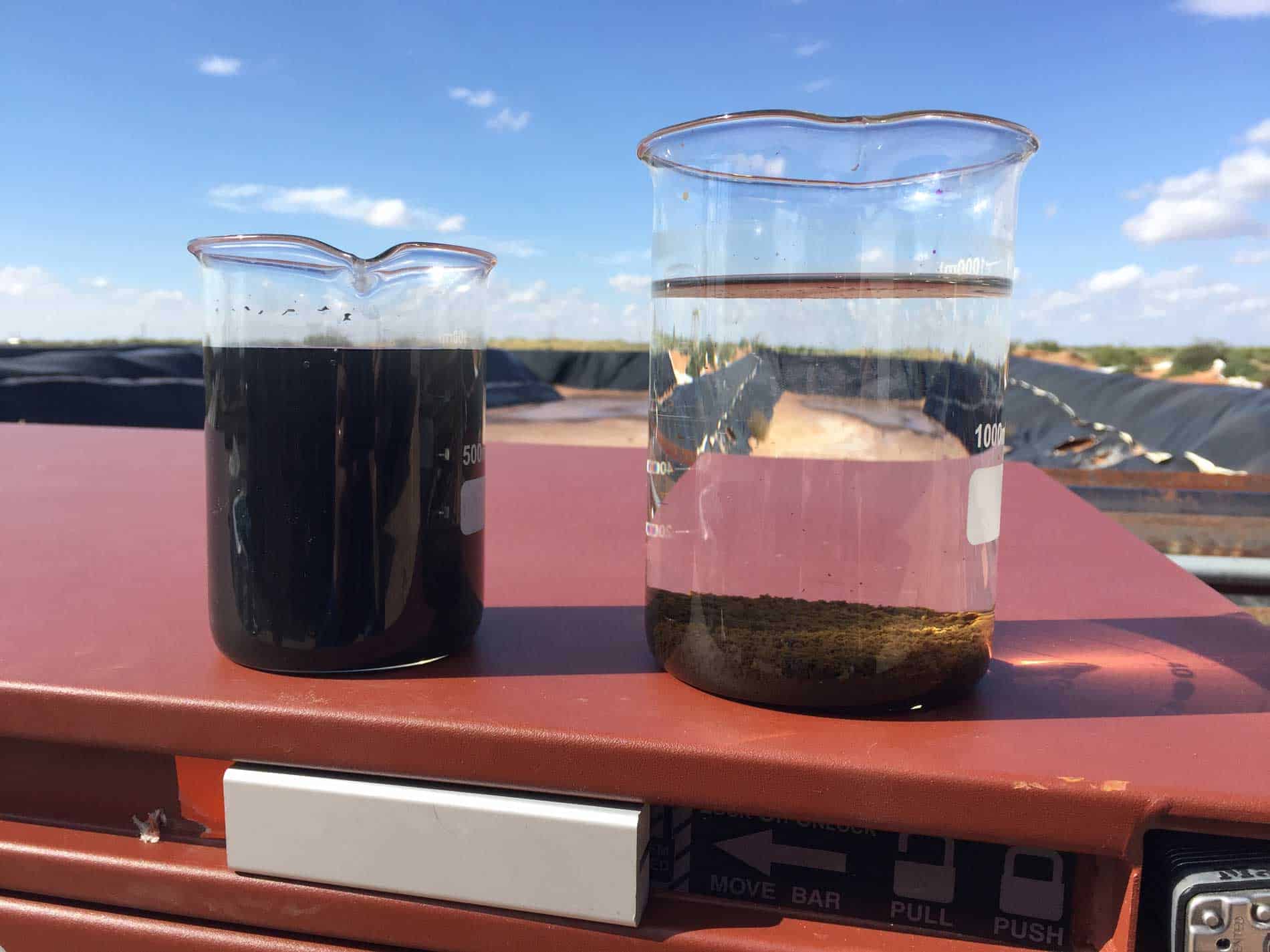API RP 13M Solids in Produced Water Testing
The API Recommended Practice (RP) 13M is a widely recognized standard that provides guidance for the management of solids in produced water from oil and gas operations. This service focuses on the specific analysis required to ensure compliance with this standard, particularly concerning the quantification and characterization of suspended solids present in produced water.
Produced water is a critical byproduct of oil and gas extraction processes, comprising various dissolved chemicals, particulates, and biological materials. The presence of these solids can lead to significant operational challenges such as pipeline blockages, corrosion, fouling of equipment, and reduced efficiency of treatment processes. Therefore, accurate measurement and control are paramount for effective production management.
API RP 13M outlines the recommended practices for monitoring and managing produced water solids content through comprehensive sampling, laboratory analysis, and reporting methodologies. This service involves precise laboratory testing to determine the concentration and types of suspended solids, enabling operators to make informed decisions regarding treatment processes and operational adjustments.
The testing procedure typically begins with the collection of representative samples from production facilities or processing plants. These samples are then transported to our state-of-the-art laboratories for analysis using advanced analytical techniques such as gravimetric methods, laser diffraction, and optical particle counters (OPCs). Each method provides unique insights into the size distribution, shape, and composition of the solids present.
Gravimetric methods involve drying the sample to a constant weight before weighing it to determine the total suspended solid content. Laser diffraction measures particle sizes by analyzing light scattering patterns, offering detailed information about the size distribution across various ranges. OPCs utilize laser beams to detect and count individual particles, providing precise counts of both large and small particles.
The results from these analyses are then compiled into comprehensive reports that detail the concentrations and types of solids detected in the produced water. These reports serve as a valuable resource for quality managers, compliance officers, R&D engineers, and procurement teams to assess current practices and identify areas for improvement.
Compliance with API RP 13M is essential for maintaining operational efficiency, ensuring environmental sustainability, and meeting regulatory requirements. By adhering to these guidelines, operators can minimize the risks associated with solid accumulation in their systems while optimizing resource utilization and reducing costs.
- Treatment Optimization: Identifying problematic solids allows for targeted treatment strategies that improve water quality and enhance operational performance.
- Regulatory Compliance: Meeting API RP 13M standards ensures that produced water management practices are in line with industry best practices and regulatory expectations.
- Economic Benefits: Reducing the amount of solids in produced water can lead to lower operational costs through minimized maintenance requirements and extended equipment life.
- Environmental Impact Reduction: Effective management of produced water solids contributes to reduced environmental impact by minimizing contamination of local ecosystems.
Applied Standards
The primary standard governing this service is API RP 13M, which provides a framework for the analysis and management of solids in produced water. This document emphasizes the importance of accurate quantification and characterization techniques to support effective produced water treatment processes.
API RP 13M specifies that laboratories must follow rigorous protocols when conducting solid content analyses to ensure reliable and reproducible results. It recommends gravimetric methods, laser diffraction, and OPCs as suitable analytical tools for determining the total suspended solid concentration and particle size distribution in produced water.
Gravimetric analysis involves drying the sample at a specified temperature until it reaches a constant weight, after which its mass is measured to calculate the percentage of solids. Laser diffraction measures the scattering pattern of laser beams as they pass through or around particles, providing insights into the size distribution. OPCs use laser beams and detectors to count individual particles, offering accurate particle number counts.
By adhering to these standards, laboratories can provide clients with consistent and reliable data that are essential for maintaining compliance with regulatory requirements and optimizing produced water management practices.
Why Choose This Test
Choosing API RP 13M Solids in Produced Water Testing offers numerous advantages, particularly for oil and gas operators seeking to enhance their operational efficiency and environmental performance. This service provides essential data that enables informed decision-making processes related to produced water management.
The test results are crucial for several reasons:
- Enhanced Operational Efficiency: Precise knowledge of solid content helps operators implement targeted treatment strategies, reducing downtime and maintenance costs.
- Better Environmental Stewardship: By minimizing the environmental impact through effective management of produced water solids, companies demonstrate their commitment to sustainable practices.
- Compliance with Regulations: Adhering to industry standards ensures that operations remain compliant with local and international regulations governing produced water discharge.
- Improved Resource Utilization: Optimizing the use of resources such as chemicals, energy, and manpower is made possible through informed decision-making supported by this test service.
In summary, choosing API RP 13M Solids in Produced Water Testing equips operators with the necessary tools to achieve operational excellence while contributing positively to environmental conservation efforts.
Use Cases and Application Examples
- Produced Water Treatment: Operators can use this test to assess the effectiveness of their current treatment processes, identifying areas where improvements are needed. Process Optimization: By monitoring solid content regularly, operators can fine-tune their production processes for maximum efficiency and minimal waste.
One example comes from a major oil company that sought to enhance its produced water treatment procedures. After implementing API RP 13M Solids in Produced Water Testing, they discovered significant improvements could be made by adjusting the dosage of coagulants used during sedimentation stages. This adjustment not only increased the efficiency of solid removal but also reduced operational costs.
Another application involves a refinery that faced recurring issues with pipeline blockages caused by high concentrations of suspended solids. By implementing this testing service, they were able to identify the specific types and quantities of solids responsible for these blockages. Armed with this information, they could then implement targeted cleaning protocols and modify their treatment processes accordingly.





